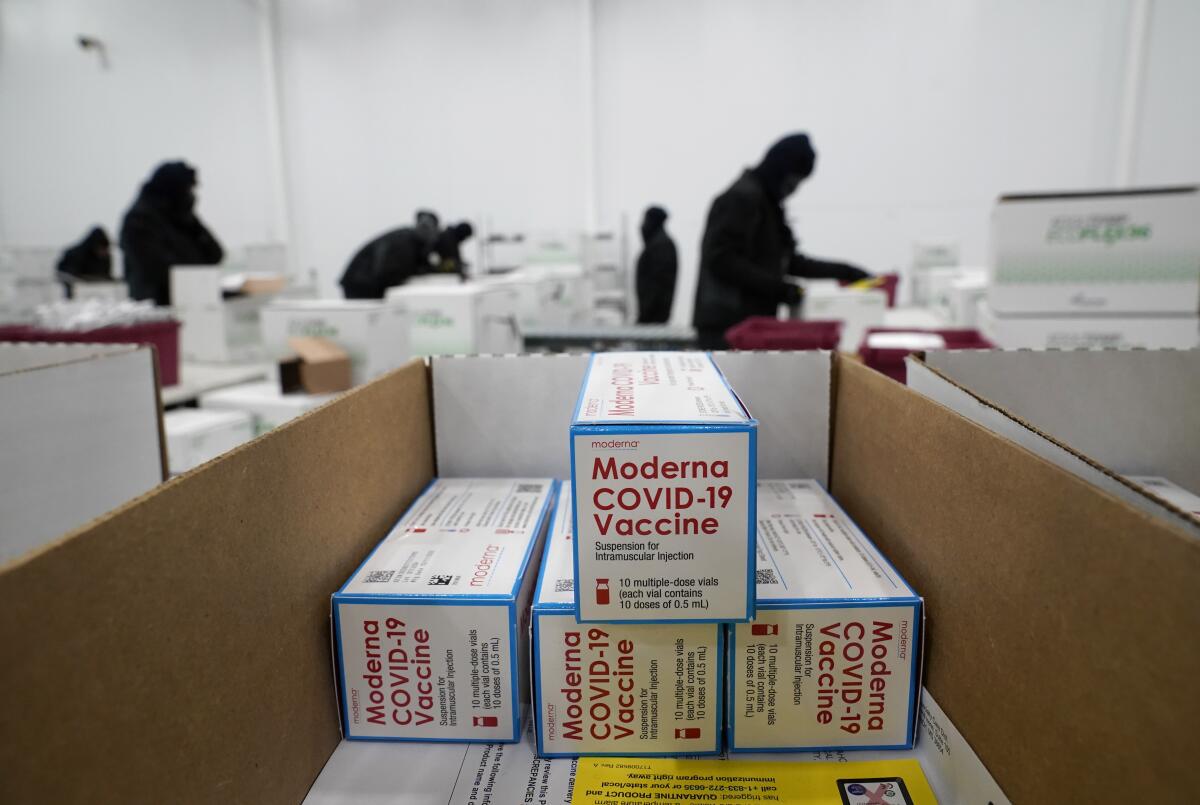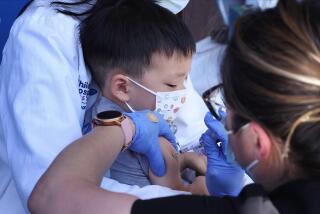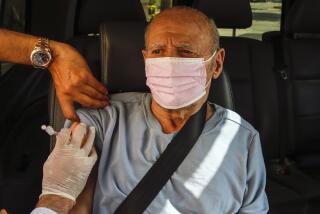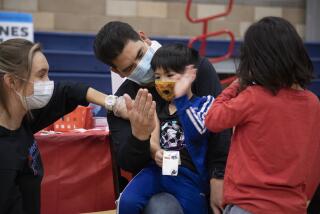California will resume using questioned doses of Moderna COVID-19 vaccine

- Share via
SACRAMENTO — California’s top epidemiologist, Dr. Erica Pan, said late Wednesday that an expert panel’s review of apparent allergic reactions believed to be tied to a specific lot of Moderna’s COVID-19 vaccine found “no scientific basis” for continuing to withhold the doses.
The state had received about 330,000 doses of the Moderna vaccine from the specific lot, which were distributed across the state. Last week, seven people experienced reactions at a drive-through clinic in San Diego, some of which involved rapid swelling. But none were anaphylaxis or life-threatening reactions, according to the Western States Scientific Safety Review Workgroup.
The symptoms were, however, severe and required medical attention, Pan said previously.
She added: “Out of an abundance of caution,” the state recommended healthcare providers to stop distributing the specific lot Sunday until a review of its safety was completed. The workgroup said Wednesday in a statement that it recommended providers resume using the doses given how many people nationwide received the vaccine from the same lot without similar reactions, as well as the immediate need for vaccination during the pandemic.
“These findings should continue to give Californians confidence that vaccines are safe and effective, and that the systems put in place to ensure vaccine safety are rigorous and science-based,” Pan said.
The workgroup did not identify a reason for the “higher than usual” number of reactions in San Diego. Pan said that all of the individuals who had reactions “are home and well.”
The COVID-19 vaccine has specific guidelines when administering inoculations, including monitoring patients for at least 15 minutes after a dose. The observation period is longer for those with certain medical conditions.
More to Read
Sign up for Essential California
The most important California stories and recommendations in your inbox every morning.
You may occasionally receive promotional content from the Los Angeles Times.











